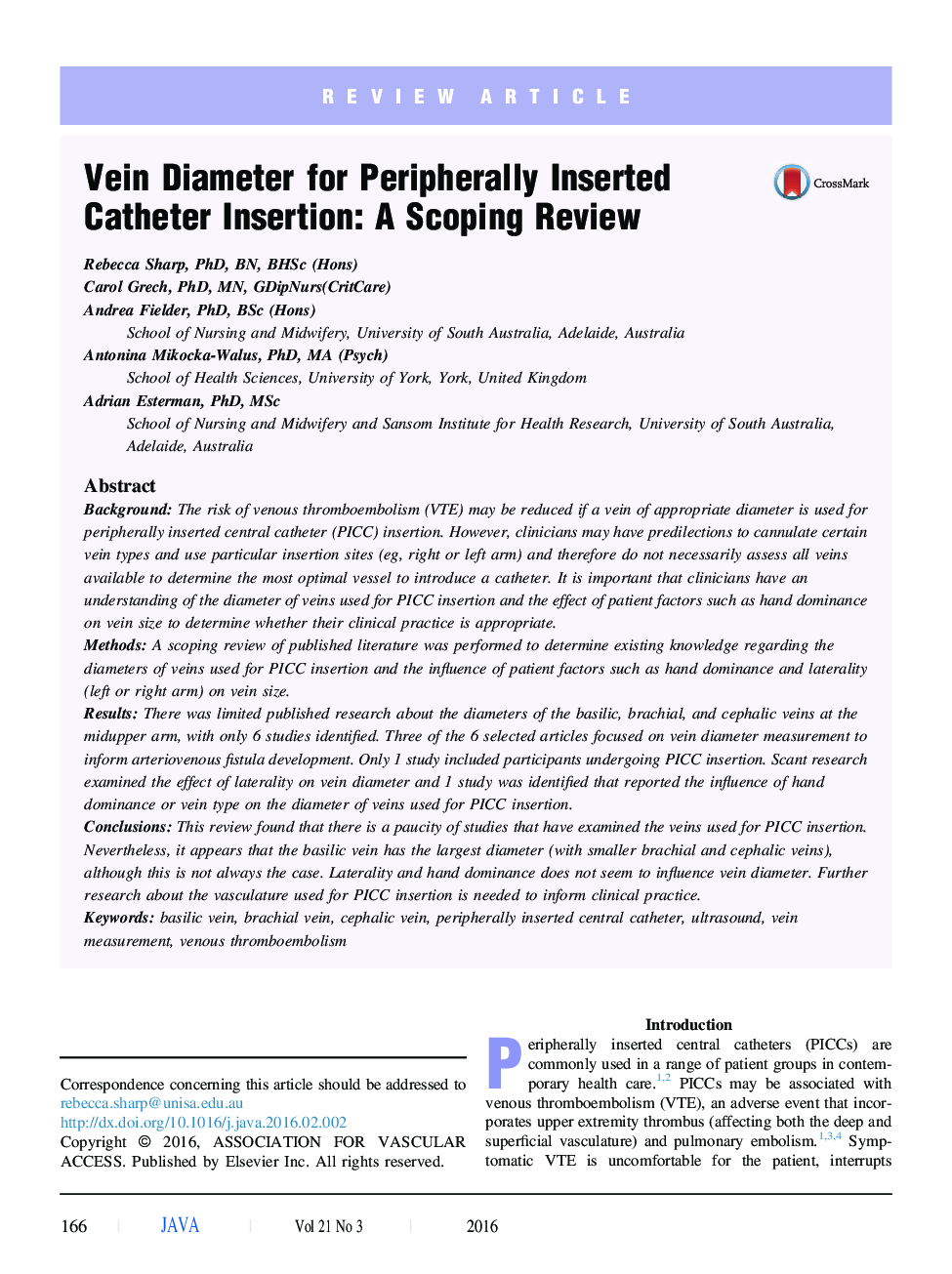| کد مقاله | کد نشریه | سال انتشار | مقاله انگلیسی | نسخه تمام متن |
|---|---|---|---|---|
| 2662373 | 1403712 | 2016 | 10 صفحه PDF | دانلود رایگان |
• There is lack of research that describes the diameter of the basilic, brachial and cephalic veins in the mid-upper arm.
• Most knowledge regarding upper arm vein diameter in participants with health conditions stems from studies that examine vein size for arteriovenous fistula development in patients with end-stage renal disease. These findings may be limited in their applicability to PICC insertion practice due to the effect of the disease process on this patient group.
• Only one study was identified that measured vein diameter in participants undergoing PICC insertion
• Only one study was identified that analysed for a difference in vein diameter according to vein type and examined the effect of patient factors such as laterality and hand-dominance on those measurements.
• Although there is some evidence that the basilic vein has on average, a larger diameter than the brachial, with the cephalic vein the smallest, this is not true in all patients, and therefore all three veins should be considered for PICC insertion.
• Patient side or hand dominance does not appear to be associated with vein diameter. Choice of side for PICC insertion may be based on other considerations such as patient preference.
BackgroundThe risk of venous thromboembolism (VTE) may be reduced if a vein of appropriate diameter is used for peripherally inserted central catheter (PICC) insertion. However, clinicians may have predilections to cannulate certain vein types and use particular insertion sites (eg, right or left arm) and therefore do not necessarily assess all veins available to determine the most optimal vessel to introduce a catheter. It is important that clinicians have an understanding of the diameter of veins used for PICC insertion and the effect of patient factors such as hand dominance on vein size to determine whether their clinical practice is appropriate.MethodsA scoping review of published literature was performed to determine existing knowledge regarding the diameters of veins used for PICC insertion and the influence of patient factors such as hand dominance and laterality (left or right arm) on vein size.ResultsThere was limited published research about the diameters of the basilic, brachial, and cephalic veins at the midupper arm, with only 6 studies identified. Three of the 6 selected articles focused on vein diameter measurement to inform arteriovenous fistula development. Only 1 study included participants undergoing PICC insertion. Scant research examined the effect of laterality on vein diameter and 1 study was identified that reported the influence of hand dominance or vein type on the diameter of veins used for PICC insertion.ConclusionsThis review found that there is a paucity of studies that have examined the veins used for PICC insertion. Nevertheless, it appears that the basilic vein has the largest diameter (with smaller brachial and cephalic veins), although this is not always the case. Laterality and hand dominance does not seem to influence vein diameter. Further research about the vasculature used for PICC insertion is needed to inform clinical practice.
Journal: Journal of the Association for Vascular Access - Volume 21, Issue 3, September 2016, Pages 166–175
